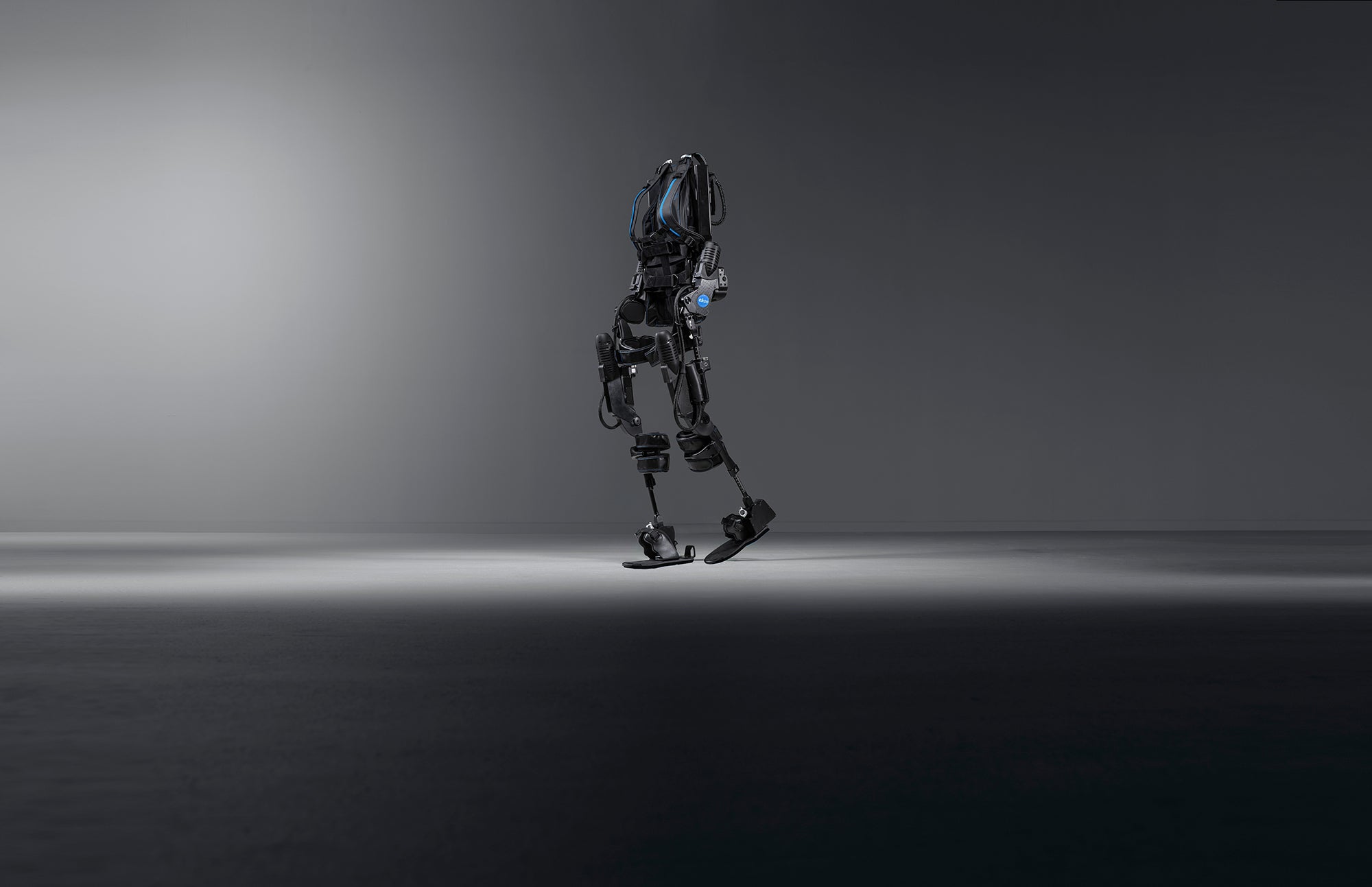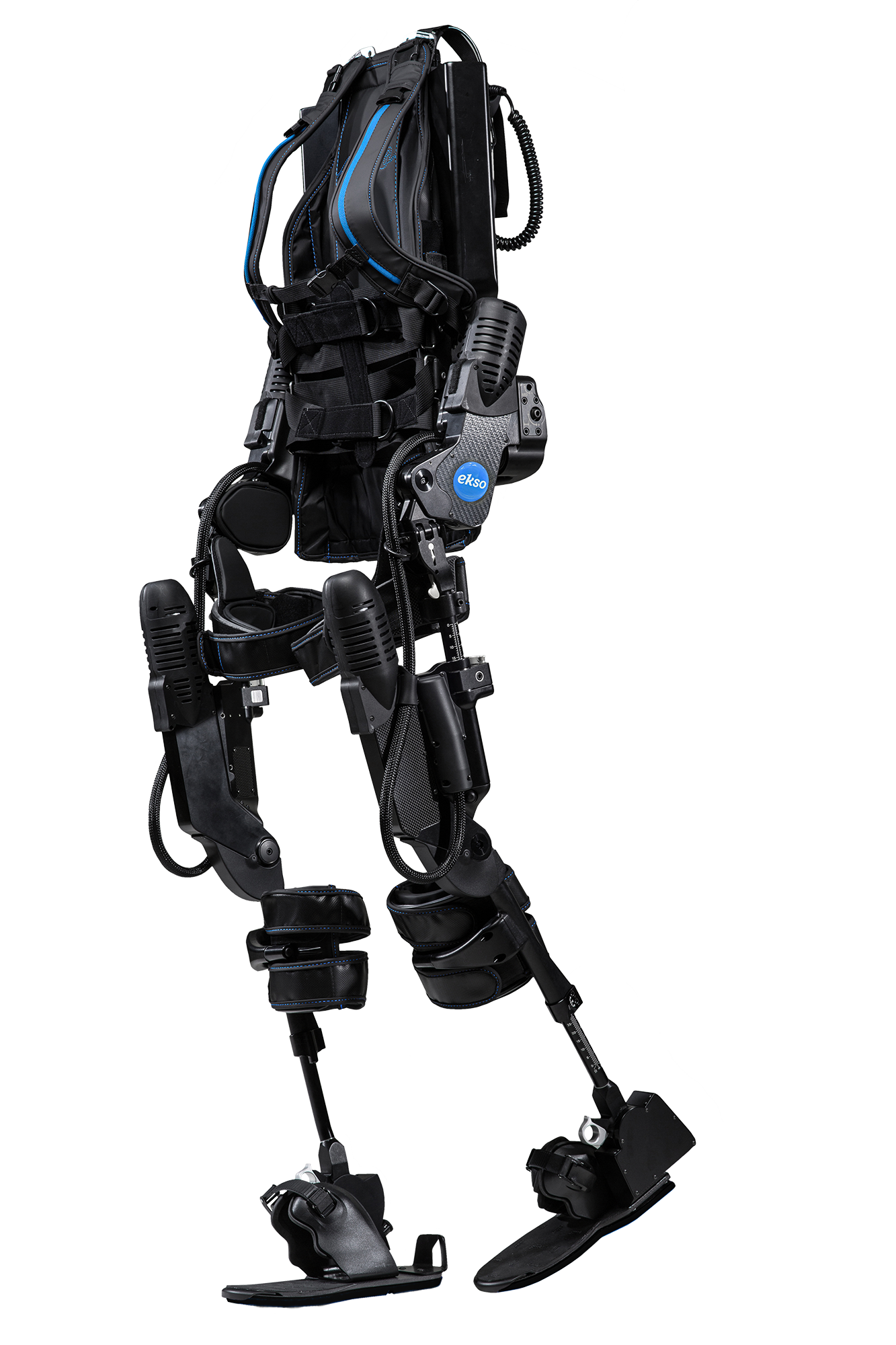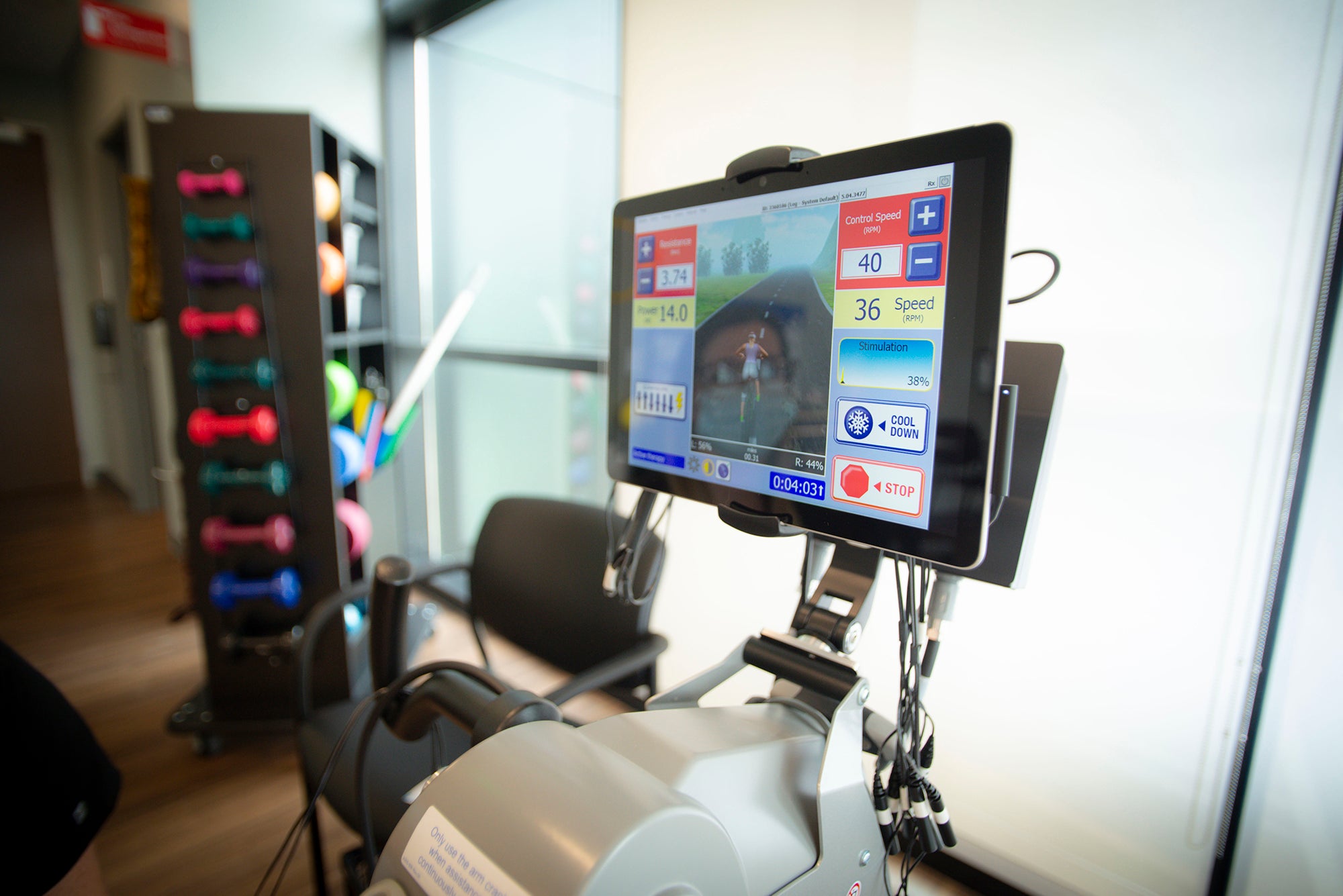Taking New Steps with Technology
August 1, 2023
By: WakeMed Rehab & Physical Therapy
Categories: Physical Therapy, Foundation
At WakeMed Rehabilitation Hospital, therapeutic technologies have become an integral part of patient treatment over the past decade. These specialized therapeutic interventions help patients navigate their own unique paths to healing. The treatment plan for each patient is far from one-size-fits-all.
“As therapists, we want to optimize treatment time with our patients. Therapeutic technologies that assist with mobility and gait training help us more efficiently and effectively progress patients toward their functional goals,” said Caroline King, PT, DPT, physical therapist at WakeMed.
King says gait training, the therapeutic practice of walking, has always been one of the trademark specialties of physical therapists.
Advances in rehabilitation technology are embraced by the team at WakeMed Rehab to help retrain muscles that patients are unable to recruit on their own due to weakness, injury or neurological deficit. Core therapeutic technologies that are regularly integrated into patient recovery plans at WakeMed Rehab include a wearable robotic exoskeleton (EksoNR™) and functional electrical stimulation.
Reaching New Goals with Robotics
WakeMed Rehab uses the most current exoskeleton created by Ekso Bionics, the EksoNR. It is the first robotic exoskeleton to be FDA cleared for use with patients following a stroke, spinal cord injury, acquired brain injury and multiple sclerosis. The wearable robotic device supports a patient’s trunk and legs and is used by specially trained physical therapists to promote correct movement patterns during standing and walking, while monitoring safety and avoiding fall risk.
“We were fortunate to be one of the first facilities in the nation to acquire and implement the use of the initial model of Ekso in 2012,” says King. “The EksoNR’s impressive and intuitive technology provides numerous rehabilitative benefits to progress a patient’s balance, coordination and strength.”

Retraining the Body and Brain
EksoNR is used as a tool to progress patients with standing and walking as they recover from a neurological injury or condition. Ekso certified physical therapists have the ability to tailor the exoskeleton’s settings to each patient’s therapeutic needs and goals. The EksoNR not only supports forward walking but also challenges backward walking, sidestepping and resisted walking.
This latest model is equipped with sophisticated sensors and software that help patients achieve high quality and high intensity repetitions of movement, which are crucial to neuroplasticity and improved function.
Gaining Confidence and Freedom
EksoNR helps the WakeMed Rehab team get many patients on their feet sooner, allowing them to re-learn correct movement patterns. The goal is to help patients steadily regain more independence by recovering as much strength and coordination as possible to improve mobility and ultimately walk again without the assistance of this technology.
“Our therapy team has seen hundreds of patients make excellent progress with the use of Ekso over the last decade,” says King. Evidence shows that EksoNR not only helps patients achieve improved quality of movement while in the device, but excellent carry over outside of the device.
Rehab gives physical therapists the opportunity to mobilize patients earlier in their rehabilitation for optimal outcomes.
Recently, WakeMed Rehabilitation Hospital was recognized as one of only seven ‘Ekso Reference Centers’ in the nation by Ekso Bionics. This achievement acknowledges WakeMed’s investment, clinical development and creativity with Ekso over the past decade.
Restoring Mobility with Electrical Stimulation
Functional electrical stimulation (FES) involves the use of low-level electrical current to achieve improved muscle contractions – helping move a patient’s muscle if they are unable to flex it on their own or if the muscle is working at less than a normal level. In 2020, WakeMed Rehab opened a formal FES program facilitated by therapists who are specially trained to use FES to address patient goals for improved strength and function. FES is mainly used for people who have neurological deficits from a stroke, traumatic brain injury or spinal cord injury; however, benefits have been seen for people navigating mobility challenges with other diagnoses as well.
The biggest advantage of the program at WakeMed Rehabilitation Hospital is that it gives patients better access to a very beneficial treatment modality. In addition to improving strength when patients may not have the ability to move on their own, FES can strengthen muscles in a consistent and functional way that encourages muscle growth and nerve regeneration. This treatment can also help slow the muscle atrophy process for patients with persistent neurological deficits.
“It really brings me joy to know that I can be part of the process to help people get back on their path to meaningful life activities,” shares James Flanagan, MS, OTR/L, ATP.

Experienced & Equipped
The highly trained team at the WakeMed FES program focuses on providing patients additional therapy with access to the use of FES cycles and a standalone Xcite. The use of the FES cycles and Xcite enable the WakeMed Rehab team to help people improve their mobility and gait sooner than with traditional therapy alone.
“Over my 15 years at WakeMed, it has always been a priority to provide our patients with the best possible, advanced and evidence-based therapies,” said James Flanagan, MS, OTR/L, ATP, occupational therapist and clinical specialist at WakeMed. “The devices that we use are sophisticated and can be complex to set up, so we’ve established an experienced team who can efficiently use this available technology.”
FES cycles use multiple channels of electrical stimulation to help patients cycle on a stationary bike using either their lower extremities or upper extremities. The cycle is programmed to stimulate muscles in a specific succession in order to elicit the proper movements through a cycling pattern. WakeMed’s Rehabilitation Hospital’s FES program has a 12-channel cycle with the ability to stimulate 12
muscle groups simultaneously and two other cycles that can each stimulate six muscles groups at once.
Additionally, the FES includes another 12-channel device called Xcite, which is a standalone device that
allows patients to work on functional tasks such as sitto-stand, reaching, transfers, and even activities of daily living tasks like brushing teeth and self-feeding. Xcite is a good option for patients who have more stability but need to improve finer control of muscles.
“If a patient has a specific functional deficit, there is likely a program that will address it on the Xcite,” says Flanagan. “And if the program does not exist for what we need, there is the capability to create new programs to fit an individual’s needs as we seek to reconnect them to meaningful activities.”
Investing in the Transformation of Lives
The physical, social and emotional benefits of a patient’s functional mobility progress are priceless. With a focus on improved quality of life, the team at WakeMed Rehab consistently seeks to acquire the latest equipment and training to enhance patient care and treatment. This commitment has set WakeMed Rehab apart from other facilities.
“Thanks to the ongoing investments of the WakeMed Foundation and the commitment of the Rehab management team, we have been able to acquire up-to-date models, train various clinicians and gradually increase the number of patients who can benefit from the amazing technologies that are available,” says King.
Taking the necessary steps forward in therapeutic technologies is invaluable to WakeMed patients as they strive to take their next step in healing.
“As we continue to push the boundaries and combine conventional therapy with today’s technology, it’s a game changer to have the ability to pursue new things on the horizon that we believe will be beneficial for our patients,” said Flanagan. “It’s what enables therapists
like me to continue to evolve professionally and practice with the passion that we do.”
WakeMed Rehab Hospital
Our flagship Rehab Hospital is a 103-bed inpatient rehab facility (IRF) with four units and gyms for adult and children recovering from stroke, limb loss, spinal cord injury, brain injury or other injury or diseases impacting their functional independence. These units are equipped with highly advanced technology to address the specific needs of adults and children in recovery.
Will you help our WakeMed Rehab patients who need this innovative care?
Donate to the WakeMed Foundation. Earmark your donation for Rehab Services.